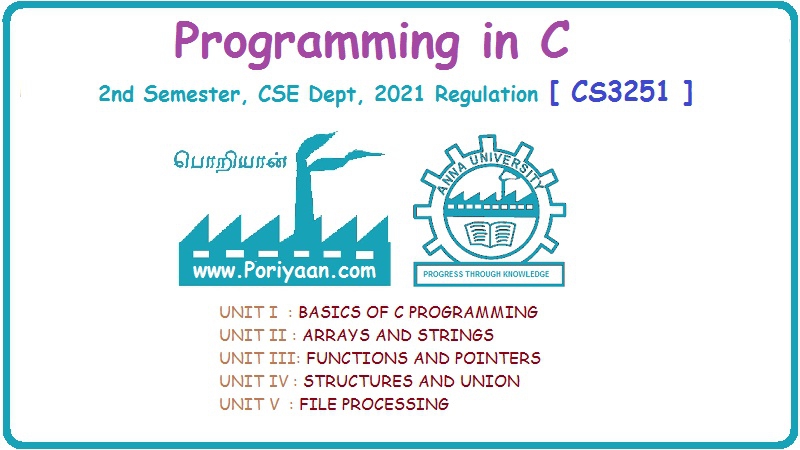Programming in C: Unit III (a): Functions
Return Statement
with Example C Programs
The return statement is used to terminate the execution of a function and returns control to the calling function.
RETURN
STATEMENT
The
return statement is used to terminate the execution of a function and returns
control to the calling function. When the return statement is encountered, the
program execution resumes in the calling function at the point immediately
following the function call. Refer Figure 4.2 in which the control passes from
the called function to the calling function when the return statement is
encountered. A return statement may or may not return a value to the calling
function. The syntax of return statement can be given as
return <expression>;
Programming Tip:
It
is an error to use a return statement in a function that has void as its return
type.
Here
expression is placed in between
angular brackets because specifying an expression is optional. The value of expression, if present, is returned to
the calling function. However, in case expression
is omitted, the return value of the function is undefined.
The
expression, if present, is converted to the type returned by the function. A
function that has void as its return
type cannot return any value to the calling function. So in a function that has
been declared with return type void,
a return statement containing an
expression generates a warning and the expression is not evaluated.
For
functions that have no return
statement, the control automatically returns to the calling function after the
last statement of the called function is executed. In other words an implicit
return takes place upon execution of the last statement of the called function,
and control automatically returns to the calling function.
Note
The
programmer may or may not place the expression in a return statement within
parentheses.
By
default, the return type of a function is int.
Programming Tip:
When
the value returned by a function is assigned to a variable, then the returned
value is converted to the type of the variable receiving it.
A
function may have more than one return statement. For example, consider the
program given below.
#include
<stdio.h>
#include
<conio.h>
int
check_relation (int a, int b);
int
main()
{
int
a=3, b=5, res;
clrscr();
res
= check relation (a, b);
if
(res ==0) // Test the returned value
printf("\n EQUAL");
if
(res==1)
printf("\n
a is greater than b");
if
(res==-1)
printf("\n
a is less than b");
getch();
return
0;
}
int
check_relation (int a, int b)
{
if
(a==b)
return
0;
else
if (a>b)
return
1;
else
return
-1;
}
Output
a is less than b
Programming Tip:
An
error is generated when the function does not return data of the specified
type.
In
the above program there are multiple return
statements, but only one of them will get executed depending upon the
condition. The return statement, like
the break statement, is used to cause
premature termination of the function.
Programming Tip:
A
function that does not return any value cannot be placed on the right side of
the assignment operator.
An
expression appearing in a return
statement is converted to the return type of the function in which the
statement appears. If no implicit conversion is possible, the return statement
is invalid. Since the return type of
the function check_relation () is int, so the result either 0, 1, or -1 is evaluated as an integer.
We
have mentioned earlier that the variables declared inside the function cease to
exist after the last statement of the function is executed. So how can we
return the value of sum to the program that adds two integers using a function?
The answer to this question is that a copy of the value being returned is made
automatically and this copy is available to the return point in the program.
Using Variable Number of Arguments
Some
functions have a variable number of arguments and data types that cannot be
known at the compile time. Typical examples of such functions include the printf() and scanf() functions. ANSI C offers a symbol called ellipsis to handle
such functions. The ellipsis consists of three periods (...). It can be used as:
int func (char ch, ...);
The
function declaration statement given above states that func is a function that
has an arbitrary number and type of arguments. However, one must ensure that
both the function declaration and function definition should use the ellipsis
symbol.
Programming in C: Unit III (a): Functions : Tag: : with Example C Programs - Return Statement
Related Topics
Related Subjects
Programming in C
CS3251 2nd Semester CSE Dept 2021 | Regulation | 2nd Semester CSE Dept 2021 Regulation
